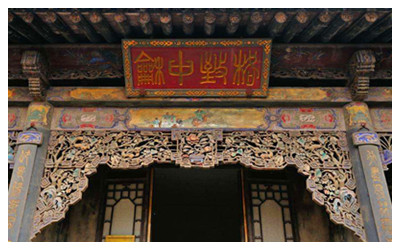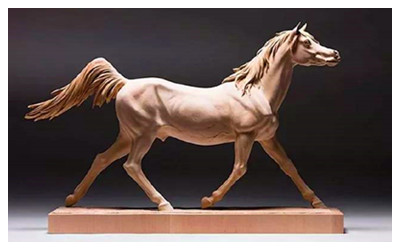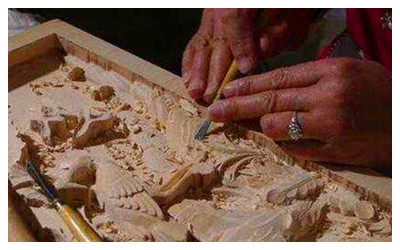Chinese Wood Carving is a kind of sculpture in our country. It is often referred to as "folk art." Carvings can be divided into three categories: three-dimensional carvings, root carving and relief sculpture. Wood carving is a separate type of work out of the woodwork. In the job title for our country, it can be classified as "Fine Woodworking."

The usual argument is: China's wood carving art originated in the Neolithic period. But in fact, wood sculpture, like other arts, is accompanied by the generation of mankind. At the beginning, it is just an unconscious act, until the people have aesthetic, woodcarving really become an art. Wood carving art originated in the Neolithic China. Dating back to more than 7000 years, Zhejiang Yuyao Hemudu culture have emerged wood fish carvings. Wood carving matured in Qin and Han dynasties and during this time, painting and carving is exquisite perfection. The appearance of colored wood carving marked that the ancient carvings has reached a very high level.
The Tang Dynasty was a flowering period of Chinese technology while wood carvings were becoming increasingly perfect. Many preserved wooden statues are ancient Chinese art masterpiece with modeling concise, skilled knife smooth, crisp lines of technological features. It is a "darling" of today's art market at home and abroad. Wood carvings theme in Ming and Qing Dynasties are mainly common living customs, myths, such as happiness, bumper harvest, dragon and phoenix, peace wish, longevity crane and other carvings.
I

n China, woodcarving genre distinguish mostly from the area. For example: Dongyang wood carving, Yueqing boxwood carvings, Quanzhou wood carvings, Guangdong Chaozhou gold lacquer wood carving, Fujian longan wood carving,
Beijing lanterns, Taiwan wood carving, Ningbo cinnabar gold wood carving, Yunnan Jianchuan wood carving, Hubei wood carving boat, Qufu pistacia lentiscus wood carving, Suzhou carved rosewood,
Shanghai red wood carving, Nanjing antique carvings, Jiangsu Taizhou painted wood carving, Shanxi wood carving, Shandong Weifang mahogany inlay carving,
Shanghai boxwood and small white pieces wood carving, Liaoning yongling birch wood carving, Guizhou Miao dragon carving and carved masks, Jiangxi Nuo mask carving, Hubei Tongshan wood carving, Tianjin wood carving, Dongshan black coral carving and so on.
These carvings genre in the country or local are highly influential, and the most famous is the Quanzhou wood carving, Dongyang wood carving, Yueqing boxwood carving, Guangdong Chaozhou gold lacquer wood carving and Fujian longan wood carvings. These five genres are known as "China's five major woodcarving."
Dongyang Wood Carving
Zhejiang Dongyang wood carving art has a long history. It is traditional arts and crafts for Dongyang which is known as "carving town". Because the land is suitable for the growing of carving wood, such as camphor, Dongyang wood carving art was greatly developed. The macroscopic features of Dongyang wood carving lies in its preserved wood color and texture. Dongyang wood carving subjects are also very extensive, including figures, landscapes, birds, animals, flowers, fish and insects, etc.
Yueqing Boxwood Carving
Yueqing Boxwood Carving is one of Chinese folk handicraft items. Boxwood grows slowly which has the saying of "Millennium dwarf". Its texture is tough and smooth, fine-grained, yellow and moist, with ivory effect. Its color deeper in a long time, looks simple and beautiful. Boxwood is suitable for carving small furnishings. Zhejiang is the traditional boxwood carvings production areas, mainly in Yueqing and Wenzhou. Zhejiang Yueqing boxwood carvings originated in the Yueqing County, dating back to about 150 years. Yueqing boxwood carving originated in small decorative wooden dragon skeleton statues. Up to the late Qing Dynasty, it had become art appreciation goods.
Chaozhou Wood Carving
Chaozhou woodcarving originated in Guangdong Chaozhou, but as an artistic genre, it also includes all works produced in Ming and Qing Dynasties "Chaozhou House" jurisdiction of the Chao’an, Chaoyang, Puning, Raoping, Shantou,
Huilai, Haifeng, Lufeng and Meizhou Xingning, Meixian area of Meizhou City. Gild work surface is a feature of Chaozhou woodcarving, which has different style works with
Dongyang wood carving. So it is also called the "Golden woodcarving", "gold lacquer wood carving."
Fuzhou Wood Carving
Fuzhou Woodcarving of Fujian Province is an art of wood carving developed on the basis of architectural sculpture, furniture and statues of the temple, which matured in the Ming and
Qing Dynasties. Fuzhou wood carvings material is longan wood, so called "longan wood carving." Longan wood mainly spread in the southern area. Its texture is slightly crisp, fine-grained, red ocher color. Old longan tree trunk, especially the roots, is grotesque which is good for timber sculpture.
Quanzhou Wood Carving
As the State Department announced the first batch of historical and cultural city, Quanzhou has a wealth of cultural resources. As of one of hand-carved wooden folk art in Quanzhou, its development has experienced a long history. Many carvings in Quanzhou are fine crafts which are really amazing.

 Wood carving is a sculpture in China. It is often referred to as "folk art." Wood carvings can be divided into three categories: three-dimensional carvings, root carving, relief sculpture. Wood carving is a separate type of work out of the woodwork. In the job title for our country, it can be classified as "Fine Woodworking." It is a kind of folk art classified on the basis of carving materials. Craftsmen generally choose fine and tough texture which is not easily deformed such as nanmu, red sandalwood, camphorwood, cedar wood, ginkgo, agila wood, mahogany, longan wood. Natural root carving art form was "root carving." Woodcarving use several techniques including circular engraving, basso-relievo and hollow engraving. Some wood carving also applied color to protect the wood.
Wood carving is a sculpture in China. It is often referred to as "folk art." Wood carvings can be divided into three categories: three-dimensional carvings, root carving, relief sculpture. Wood carving is a separate type of work out of the woodwork. In the job title for our country, it can be classified as "Fine Woodworking." It is a kind of folk art classified on the basis of carving materials. Craftsmen generally choose fine and tough texture which is not easily deformed such as nanmu, red sandalwood, camphorwood, cedar wood, ginkgo, agila wood, mahogany, longan wood. Natural root carving art form was "root carving." Woodcarving use several techniques including circular engraving, basso-relievo and hollow engraving. Some wood carving also applied color to protect the wood. The usual argument is: China's wood carving art originated in the Neolithic period. But in fact, wood sculpture, like other arts, is accompanied by the generation of mankind. At the beginning, it is just an unconscious act, until the people have aesthetic, woodcarving really become an art. Wood carving art originated in the Neolithic China. Dating back to more than 7000 years, Zhejiang Yuyao Hemudu culture have emerged wood fish carvings. Wood carving matured in Qin and Han dynasties and during this time, painting and carving is exquisite perfection. The appearance of colored wood carving marked that the ancient carvings has reached a very high level.
The usual argument is: China's wood carving art originated in the Neolithic period. But in fact, wood sculpture, like other arts, is accompanied by the generation of mankind. At the beginning, it is just an unconscious act, until the people have aesthetic, woodcarving really become an art. Wood carving art originated in the Neolithic China. Dating back to more than 7000 years, Zhejiang Yuyao Hemudu culture have emerged wood fish carvings. Wood carving matured in Qin and Han dynasties and during this time, painting and carving is exquisite perfection. The appearance of colored wood carving marked that the ancient carvings has reached a very high level. n China, woodcarving genre distinguish mostly from the area. For example: Dongyang wood carving, Yueqing boxwood carvings, Quanzhou wood carvings, Guangdong Chaozhou gold lacquer wood carving, Fujian longan wood carving, Beijing lanterns, Taiwan wood carving, Ningbo cinnabar gold wood carving, Yunnan Jianchuan wood carving, Hubei wood carving boat, Qufu pistacia lentiscus wood carving, Suzhou carved rosewood, Shanghai red wood carving, Nanjing antique carvings, Jiangsu Taizhou painted wood carving, Shanxi wood carving, Shandong Weifang mahogany inlay carving, Shanghai boxwood and small white pieces wood carving, Liaoning yongling birch wood carving, Guizhou Miao dragon carving and carved masks, Jiangxi Nuo mask carving, Hubei Tongshan wood carving, Tianjin wood carving, Dongshan black coral carving and so on.
n China, woodcarving genre distinguish mostly from the area. For example: Dongyang wood carving, Yueqing boxwood carvings, Quanzhou wood carvings, Guangdong Chaozhou gold lacquer wood carving, Fujian longan wood carving, Beijing lanterns, Taiwan wood carving, Ningbo cinnabar gold wood carving, Yunnan Jianchuan wood carving, Hubei wood carving boat, Qufu pistacia lentiscus wood carving, Suzhou carved rosewood, Shanghai red wood carving, Nanjing antique carvings, Jiangsu Taizhou painted wood carving, Shanxi wood carving, Shandong Weifang mahogany inlay carving, Shanghai boxwood and small white pieces wood carving, Liaoning yongling birch wood carving, Guizhou Miao dragon carving and carved masks, Jiangxi Nuo mask carving, Hubei Tongshan wood carving, Tianjin wood carving, Dongshan black coral carving and so on. Ask Questions ?
Ask Questions ?